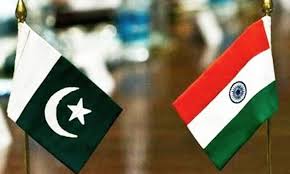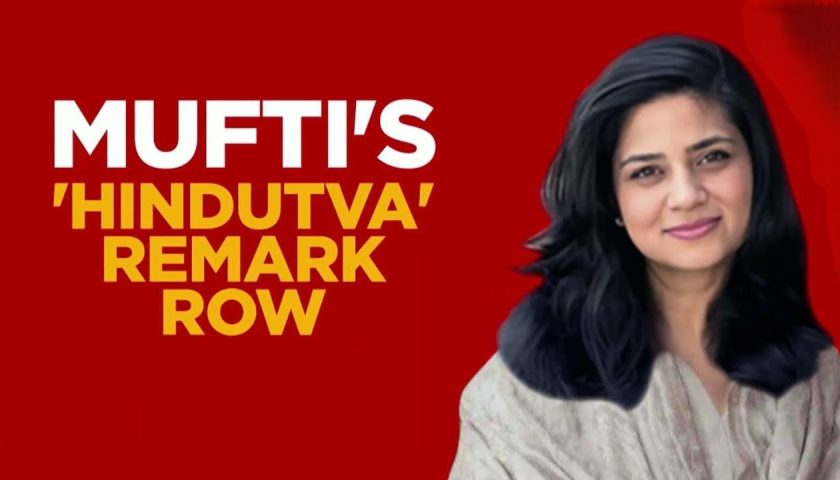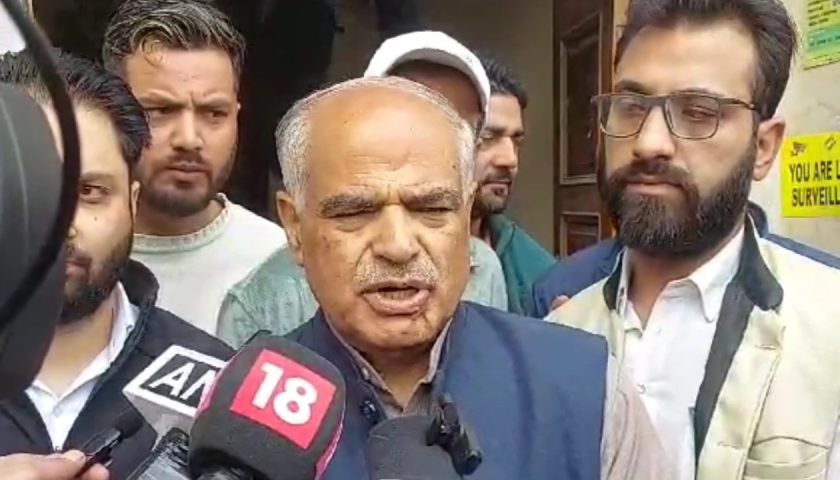 Human-rights violations anywhere in the world get ample coverage in the local print and electronic media. However, the region that gets little or scant coverage despite serious human-rights violations is the Indian Occupied Kashmir (IOK).
Human-rights violations anywhere in the world get ample coverage in the local print and electronic media. However, the region that gets little or scant coverage despite serious human-rights violations is the Indian Occupied Kashmir (IOK).
Some newspapers in the Philippines avoid covering events in Kashmir as a matter of policy, as they do not want to indulge in disputed issues. I respect their policy, however, I believe that such an attitude would rather encourage the perpetrators of such heinous crimes against humanity and would further exacerbate the situation in regions so affected. In other words, it amounts to conniving with or rewarding the oppressor. However, it is a matter of great satisfaction that such a policy is not followed by all the newspapers, and some dailies in the Philippines have the guts and the courage to call a spade a spade. I express my thanks to this and all other newspapers, which do not subscribe to such an ambivalent approach.
In the following paragraphs I would like to dilate upon the situation in the IOK and the sufferings the people in Kashmir are exposed to. Just for the information of the readers, in the last three months more than 115 Kashmiris have been martyred, over 15,000 were injured, with scores in critical condition and several hundred blinded due to use of pellet guns, including children and women. The curfew imposed by Indian occupation forces has led to severe shortage of food, medicines, water and other basic amenities, and has added to the Kashmiris’ plight.
The recent wave of killings started when Indian security forces killed young Kashmiri leader Burhan Wani. His death was protested by the local people, who braved the curfew to attend his funeral. As per estimates, about 200,000 attended his funeral. Indian security forces claim that Wani was a militant leader, however, the fact that his death led to wide- scale protests throughout Kashmir proves that he enjoyed overwhelming support of the local people.
To recapitulate, the Kashmir problem has its basis in the partition of India and Pakistan in August 1947. It was agreed that the Muslim majority area would form Pakistan, and Hindu majority area would form India. As regards princely states, the rulers were asked to seek the views of their subjects in case of a dispute. Kashmir was a Muslim majority area ruled by a Hindu ruler who, under Indian pressure, decided to accede to India against the wishes of his subjects. This led to uprising against the ruler, who invited Indian forces. Talking about the reasons for uprising, Josef Korbel, in his book Danger in Kashmir, writes that to subdue Muslim’s voice, the state’s forces were combing out the supporters of Kashmir’s accession to Pakistan. Muslim personnel of the State military and the police were dismissed, and hundreds of political workers were lodged behind the bars. There were innumerable looting of the houses of political workers. Several people were shot dead on the mere suspicion for having pro-Pakistan views. Even the lives and honor of Hindus who wanted the question of state’s accession in a democratic manner were not safe. The Hindus and Sikh refugees in the state were armed by the Kashmir government, and were encouraged to kill Muslims and others whose loyalty was considered to be dubious. As a result, around 100,000 Muslim refugees fled to Pakistan, carrying their stories of the tragic happenings in their homeland.
All these evoked strong reactions from the tribal groups in Pakistan, who attacked Kashmir to extend help to the Muslims. Faced with this onslaught, the ruler of Kashmir requested India for military assistance. Interestingly, the news about the invasion of the tribesmen reached Delhi on October 27, and by October a large contingent of Indian army landed in Kashmir. There are strong evidence to prove that the planning to take over Kashmir was made much in advance, as it is not possible for India to send fully armed army contingent in such a short time. Anyway, the Indian forces were able to thwart the advance of tribal forces. October 27 has since been marked as “Black Day,” and observed world over both by Kashmiris and Pakistanis. Incidentally, today is the Black Day.
Here it would be pertinent to mention that Indian leadership resorted to all tactics to ensure the accession of princely states to India and even resorted to force to take over control of these states. For instance, when the Muslim ruler of Junagarh—a Hindu majority state—acceded to Pakistan, India refused to accept the accession, sent its armed forces and forcefully occupied the state. Similar action was taken against the Muslim ruler of Hyderabad—a Hindu majority state—who wanted to accede to Pakistan. Likewise in Tripura state, the Muslims formed the largest group of the population. The ruler, who was a Hindu, acceded to India, despite the fact that the state was surrounded on three sides by Pakistan, and all its communications were through Pakistan. Kashmir, as is evident, was meted out that the same treatment.
Thereafter, India took the issue to the United Nations Security Council. Several resolutions passed by the UN Security Council from 1948 onward, inter alia, called for holding plebiscite in Kashmir to ascertain the views of the Kashmiri people. Though India took the Kashmir problem to the Security Council, it resorted to all sorts of subterfuges to avoid holding the plebiscite. Since then, the Kashmiris had been deprived their right of self-determination.
To suppress Kashmiris’ demand for right of self-determination, India had resorted to excessive use of force against innocent civilians. In its report on July 2, 2015, the Amnesty International has highlighted killings of innocent persons at the hands of Indian security forces in the Indian-held Kashmir. The report points out, “…the Armed Forces Special Powers Act allows troops to shoot to kill suspected militants or arrest them without a warrant…not a single member of the armed forces has been tried in a civilian court for violating human rights in Kashmir.… India has martyred 100,000 people. More than 8,000 disappeared [while] in the custody of army and state police.”
India has been justifying these atrocities by equating Kashmiris’ struggle with terrorism and blames Pakistan of fomenting militancy. It also claims that Kashmir is part and parcel of India, and whatever is happening in Kashmir, is its internal affairs.
India is wrong on both counts. First of all, Kashmir is not, and had never been, part of India. Its status as a disputed territory stands affirmed by the numerous UN Security Council resolutions. In addition, the disputed status of Kashmir is also supported by the Indian leadership in the past. Prime Minister Jawaharlal Nehru of India in his statement on All India Radio on November 3, 1947, said:
“We have declared that the fate of Kashmir is ultimately to be decided by the people. The pledge we have given not only to the people of Kashmir, but to the world. We will not and cannot back out of it.”
Later, while addressing the Indian Parliament on August 7, 1952, he said, “I want to stress that it is only the people of Kashmir who can decide the future of Kashmir.…”
There are plenty of statements by Indian leadership and the UN to the effect that Kashmir is a disputed territory, and its future is to be decided by seeking the wishes of the Kashmiris through a plebiscite under the auspices of the UN.
India’s portrayal of Kashmiris’ struggle as terrorism is another farce, which, unfortunately, has been taken at face value by the international community. Most probably, such a stand is driven by economic/commercial and other similar interests in total disregard to the moral principles contained in their constitutions, UN Charter, etc. In fact, it is such an ambivalent attitude adopted by the international community that emboldened India to refuse to grant the Kashmiris their right of self-determination and claim that Kashmir is an integral part of India. The day is not far when India will take away the special status Kashmir enjoys by amending its constitution.
It is worth mentioning that India has maintained that United Nations Military Observer Group in India and Pakistan (UNmogip) has outlived its utility and is irrelevant after the Simla Agreement pact in 1972, under which the two countries agreed to resolve all disputes, including Kashmir bilaterally. UNmogip was set up in 1949 to supervise the cease-fire in the divided region. It has even asked UNmogip to hand over the Delhi premises from where it was running a liaison office for more than four decades. Interestingly, during bilateral talks, it refuses to discuss Kashmir problem, claiming that it is an integral part of India, hence, nonnegotiable. Instead, it demands Pakistan to hand over the part of Kashmir held by Pakistan. This brings us to another interesting point. The part held by Pakistan is free of any violence, people are living peacefully. There is no demand to leave Pakistan and join India. Such a preposterous demand by India hardly makes any sense. It is an area open to everyone and is frequented by foreign tourists and members of the diplomatic community in Pakistan, including representatives of the UN. In fact, the Office of the High Commissioner for Human Rights (OHCHR) has been denied access by India to Indian-occupied Jammu and Kashmir, whereas Pakistan has never prevented UN officials from traveling to Azad Jammu and Kashmir.
The situation in the IOK is far from satisfactory. To strengthen its reign of terror, India has stationed more than 600,000 army men. None seems to have asked India as to what necessitates deployment of such a large force in the region with a population of 10 million, i.e., one soldier for every 16.6 natives. And why such a huge deployment, despite its repressive policies, has been unable to check the freedom struggle despite numerous killings. Moreover, it is a fact that every year on the Indian Independence Day on August 15, Kashmiris on both sides of the Line of Control and the world over observe it as Black Day to convey the message to the international community that India continues to usurp its inalienable right to self-determination. On the contrary to express solidarity with Pakistan, Pakistani flags are hoisted by the Kashmiris on August 14—Pakistan Independence Day. All this is a clear manifestation that the struggle is predominantly indigenous, and equating it with terrorism is nothing but a gross injustice on the part of India.
Kashmir is a universally recognized dispute with numerous UN Security Council resolutions outstanding for almost seven decades. Wars have not succeeded in resolving the issue of Kashmir. Dialogue is the best option to amicably resolve all issues between India and Pakistan, including the dispute of Kashmir. Pakistan remains ready for dialogue.
The international community should rise to the occasion, and tell India that the treatment being meted out to the Kashmiris is simply unacceptable. India should stop its human-rights violations, and fulfill its commitments under the UN Security Council resolutions to resolve the Kashmir dispute in a peaceful manner. President Duterte had very aptly said that a human-rights violation, whether committed by Moses or Abraham, is still a violation of human rights. The killings in Kashmir are not an ancient phenomenon. These are very much current and are being committed despite international community’s so-called commitments to human rights. The people in the Philippines have shown their sensitivities to such violations, even if they happened in the last century. I am sure they cannot remain insensitive to the killings presently going on in Indian-occupied Kashmir.





